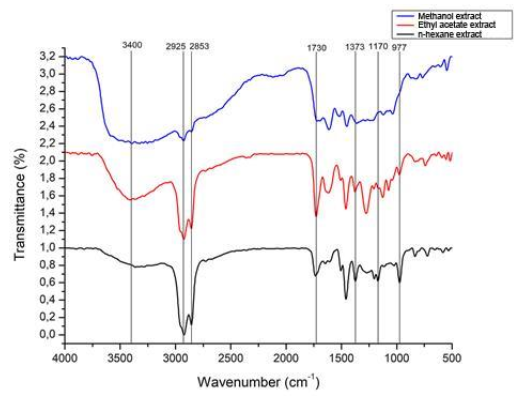Antioxidant Capacity Fraction of the Pelawan Stems (Tristaniopsis merguensis Griff)
Abstract
The impact of reactions free radical compounds can cause various health problems such as inflammation, aging, and cancer. Therefore, to avoid damage caused by free radicals, the body needs an important substance, antioxidants. Natural antioxidants are more recommended than synthetic antioxidants because synthetic antioxidants must be in accordance with the prescribed dose because they can cause side effects that are harmful to the body. This study aimed to determine the antioxidant activity of the extract and fraction of the Pelawan (Tristaniopsis merguensis Grifft.) stem extract. Antioxidant testing was carried out using the DPPH method on extracts and fractions of Pelawan stem extract (T. merguensis Grifft.). In addition, qualitative phytochemical testing was also carried out on extracts of the stems of Pelawan (T. merguensis). The results of the three solvent fractions, n-hexane, ethyl acetate, and methanol, were positive for flavonoid and phenolic secondary metabolites. Meanwhile, the antioxidant activity in reducing DPPH radicals in the methanol extract fraction of pelawan stems had a very strong activity with an IC50 value of 36.33 g/mL, while the ethyl acetate and n-hexane extract fractions had a very weak antioxidant activity with an IC50 value of 387.43 μg/mL dan 759.88 μg/mL.
Downloads

Copyright (c) 2023 Robby Gus Mahardika, Khairul Fajri, Henri Henri

This work is licensed under a Creative Commons Attribution-NonCommercial-NoDerivatives 4.0 International License.
Authors who publish with this journal agree to the following terms:
- Copyright on any article is retained by the author(s).
- The author grants the journal, the right of first publication with the work simultaneously licensed under a Creative Commons Attribution License that allows others to share the work with an acknowledgment of the work’s authorship and initial publication in this journal.
- Authors are able to enter into separate, additional contractual arrangements for the non-exclusive distribution of the journal’s published version of the work (e.g., post it to an institutional repository or publish it in a book), with an acknowledgment of its initial publication in this journal.
- Authors are permitted and encouraged to post their work online (e.g., in institutional repositories or on their website) prior to and during the submission process, as it can lead to productive exchanges, as well as earlier and greater citation of published work.
- The article and any associated published material is distributed under the Creative Commons Attribution-NonCommercial-NoDerivatives 4.0 International License.





_copy1.png)










